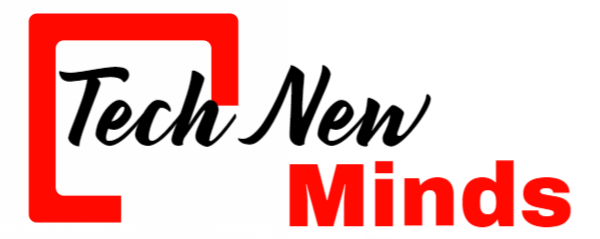Executives in every trade are going through that headache-inducing business downside every single day. The potential vitality stored within knowledge has been growing for years, however prescriptive issues with individuals, processes and technology are preserving it locked away and rendering it redundant. The prospects of releasing that vitality with a brand new tightly scoped, pragmatic strategy to knowledge are infinite. It’s time to redefine our organizational relationships with data and turn into truly and sustainably agile. They are treating data not as a project, but as a product; one that is accessible, seen and usable for everyone, regardless of their discipline or want. They are empowering their individuals to assume in one other way and modernizing their processes to work in a special way in phrases of unlocking insights.
One of the main reasons for this is merely a lack of on-the-job practice. Learning wants reinforcement with sensible application on the job, which retains issues relevant to the learner and improves the possibility of retaining knowledge. In most instances, nonetheless, CDOs’ roles are poorly defined with unclear expectations. Tom Davenport describes the CDO as essentially the most unstable job within the C-suite.
- It isn’t what we and our friends imply after we discuss what an information product is.
- If, in the extra traditional mindset, initiatives finish once a dataset or report is delivered, product thinking requires teams to retain ownership over a data product for its complete lifecycle.
- Using the Netflix example, a website might have duty for subscriptions, while one other area could deal with show and film suggestions.
We then apply a set of well-understood practices and instruments which are recognized to deliver high-quality software program and information. Sending your business customers on a data literacy course is well-intentioned and reasoned. However, it is an enormous ask and often does not work out for a quantity of reasons. Some knowledge literacy packages usually are not incorporated into enterprise strategy, whereas others are treated as aspect projects that are not given the eye they deserve. However, two of the commonest causes for failure are the one-size-fits-all strategy and the failure to strengthen studying. According to a latest survey, the typical adoption rate of analytics is 26%.
The information engineers collaborated carefully with the centralized knowledge team to design a sturdy knowledge structure that ensured information integrity and quality, ultimately reworking knowledge right into a priceless product. Emilie and Taylor’s definition of knowledge as a product appears to be quite different from the HBR, Justin Gage, and Xavier Rigol articles. The key difference is they simply call all firm data information as a product, with the person instruments being features of information as a product whereas other articles are calling the individual options data as a product. For knowledge products, the identical; financial regulators ask for information traceability and laws exists. When a report seems incorrect, we look at the data and processes behind it to determine where it got here from, where it went, and what happened to it. We may also concern an information product recall, which is hard to do, as a outcome of not like a bodily asset, it might be copied, manipulated, and despatched on once more.
Perceive With Examples The Similarities And Variations Between A “data Product” And “data As A Product”
For example, if your customer’s finish goal is to reduce churn rate by 10%, you will want to begin with that goal and work backwards – developingand develop a churn forecasting data product that will meet this need. Thinking of information as a product means putting these consumer wants at the coronary heart of their design. Fundamentally, information as a product is a concept, or methodology, about how data groups can create value in their organizations. The common belief is that making use of product administration principles to information groups will make information work extra valuable and scalable, qualities that have been missing within the knowledge group for years. What use is proudly owning knowledge sets that would remodel your organizational outcomes if most of your group can’t access them?
Data is a valuable resource that can present insights, help decision-making, and drive innovation. Companies recognize the potential to generate revenue by offering their knowledge to exterior events or creating new data-driven services. In essence, Data as a Product entails recognizing the intrinsic value of knowledge and leveraging it as a tangible offering in the market. It’s a method for companies to monetize their data assets and provide further value past their core products or services. Data as a product is the idea of making use of key product improvement ideas (Identifying and addressing unmet wants, agility, iterability, and reusability) to knowledge initiatives. Gartner coined this development as “XaaS” (Everything-as-a-Service) several years back, and data products aren’t any completely different.
Add A Product Administration Position
This may contain offering entry to uncooked datasets or providing extra refined and analyzed data. Master Data Management (MDM) is a critical discipline in the field of data management that allows organizations to centralize and preserve consistent, accurate, and high-quality master data. You can give it some thought with Legos if you need to get creative right here (as Emilie and Taylor did of their unique LO piece).
We imagine this is the best definition as a result of it encompasses key product growth principles and their software to knowledge projects. Data groups focus on solving here and now issues without considered making use of product administration principles to create sustainable solutions. If we apply product administration ideas and create the tooling and options that enable our end-users to serve their stakeholders, our data will be considerably extra priceless. Business-wide digital transformation can change relationships with information for the better, which, in flip, opens up larger potentialities for data-focused products that enhance people’s lives. A important part of that culture shift, though, is the necessity to construct data literacy in from the start. Without a workforce that’s fluent in knowledge, modernization is redundant.
A much-needed change in behaviour for the uncertain future that we are all going through. Those who have recognised the inherent flaws in an over-investment in defensive strategies usually try to comply with a needs-first method to generating value from knowledge. Using this approach, companies first attempt to perceive the business users’ needs, figure out which are unmet, and devise a technique that addresses these unmet wants. You want the senior management on board to transition into a product-led group for knowledge. Treating your data analysts as suppliers of information in spreadsheets will not present a competitive advantage in the lengthy run so you need to encourage the attitude of those that request these spreadsheets in the first place. Your data analysts don’t need to be folks who just extract knowledge and hand it over to enterprise groups to make informed selections.

Each internal course of and power is, by itself, an individual lego, however united together they build and fortify a larger knowledge product (like a elaborate Lego lair). Business users have turn into information customers and their experience is the Data Experience. The Data Experience is how these area specialists feel once they use knowledge daily to superpower their job. The owners of an information product are also accountable for sustaining agreed ranges of service. This is necessary as a outcome of without clear accountability, there might be advanced processes and competing priorities to contend with when companies go down.
Information As A Product
Data quality must be treated as a business initiative with its major give consideration to context, instead of technical dimensions. A information product delivers a high-quality, ready-to-use set of data that folks across a corporation can simply access and apply to different business challenges. For instance, a knowledge product might present a 360-degree view of an important entity, similar to clients, workers, product lines, or branches. Or it might deliver a given knowledge capability, similar to a digital twin that replicates the operation of real-world belongings.
Its many options embrace automation, low/no-code development, steady integration, testing and deployment. The finish goal of DataOps instruments should be to hurry up growth of reliable information merchandise. For example, if a corporation has invested to develop a cross-functional customer-360 data product, then it ought to be leveraged by varied departments. For this to happen, products need to be saved in a registry with sufficient metadata description so that users can simply search. It is a standard trait of companies that treat data groups as a service perform as an alternative of a growth function.
This knowledge will make businesses more agile and, by utilizing extra of the data generated, will provide better insights for future growth. You might have heard the term knowledge product being talked about in recent months. We thought we’d take time out to explain what’s an information product and how treating knowledge like a product might help organizations enhance knowledge accuracy, accessibility, and security. The Data as a Product concept represents a paradigm shift in how organizations understand and leverage their data. By recognizing data as a valuable asset with marketable potential, businesses can enhance inner decision-making and create extra revenue streams. Much like software merchandise, information merchandise also profit from a accountable and accountable team who constantly enhance performance and release new options in a secure environment.
Data Quality And Governance
Many information merchandise fail because they’re a solution seeking a problem – for example, ingesting a new dataset into the data platform because ‘someone’ will find it useful. Adding more information doesn’t necessarily remedy a customer’s issues – or present them with worth. Product thinking requires a deep knowledge and understanding of your customer.
Treating information “as a service” means your data analysts instantly ship information and insights to decision-makers normally within the form of a spreadsheet, a presentation, or an interactive dashboard fit for that purpose. The first iteration for this capability could be only a list of datasets in your de facto inside intranet and you may iterate and build incrementally from that. Remember that processes and culture are extra important than deploying the ultimate https://www.globalcloudteam.com/ data catalogue tool too early (which may be too complicated for workers to use). TerminusDB and TerminusCMS are knowledge administration platforms that treat information as a product. Organizations may also treat their knowledge as a product for internal consumption, enabling totally different departments or teams to leverage it for decision-making and strategic planning.

Businesses are constantly seeking revolutionary ways to extract worth from their operations. One such transformative idea is “Data as a Product” (DaaP), which revolutionizes the traditional perspective on knowledge. Cars come with long instruction manuals, as they’re advanced products. The documentation is on the market in many forms (on-screen, on-paper, searchable, indexed, and so forth.).
It also reduces the suggestions loops wanted to evolve or or enhance these merchandise. It encourages direct communication between the producer and the patron of data products – chopping out lengthy and convoluted central planning processes. Data as a product, however Data as a Product, is a mindset that mixes tools and strategy to treat information as a product consumed by inside prospects (in-house staff). The “product” ought to include such features as discoverability, explorability, understandability, safety, and trustworthiness.
These often entail understanding buyer needs, prioritizing solutions, owning a roadmap, engaged on a mission and imaginative and prescient for the staff, and so on. In this text, you are going to uncover what it means to treat knowledge as a product and the means to apply it no matter how centralized or decentralized your knowledge organization is. We may also cover its advantages and the guidelines your knowledge groups can observe to embrace it.
